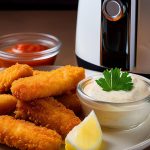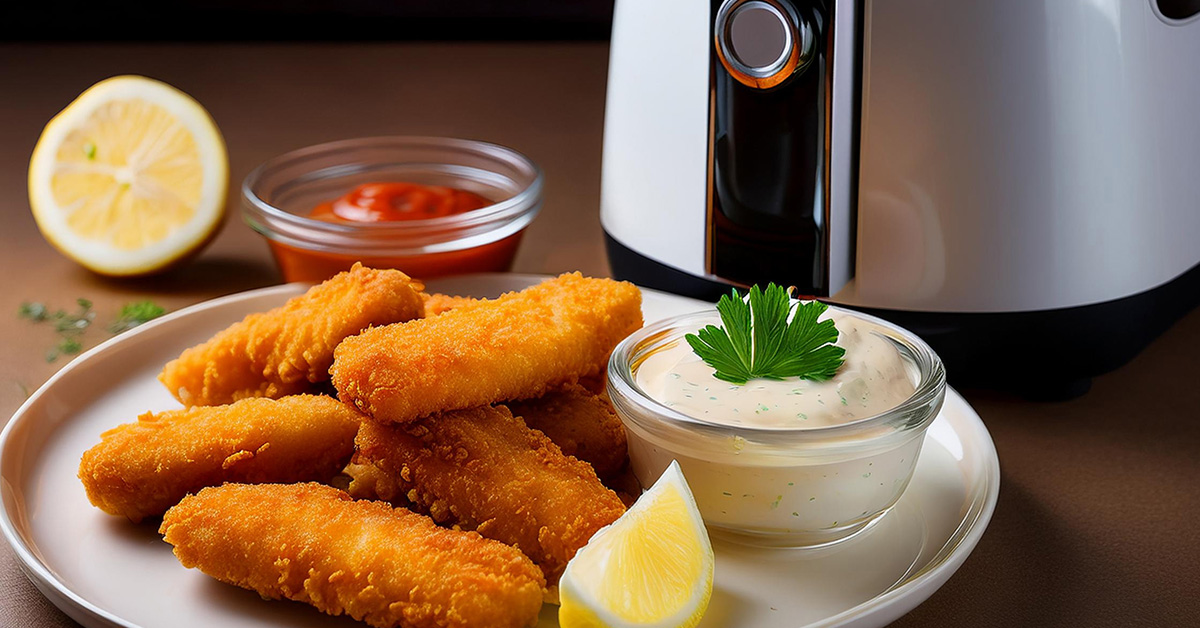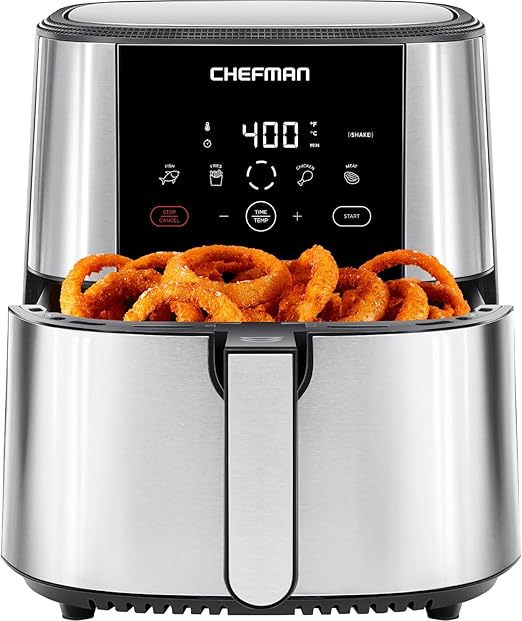Disclosure: As an Amazon Associate and participant in other affiliate programs, we earn from qualifying purchases. We only recommend products we believe will provide value to our readers.
Imagine sinking your teeth into a golden-brown, crispy exterior that gives way to tender, flaky fish inside—sounds irresistible, right? Our fish fingers recipe might evoke memories of childhood dinners or quick weeknight meals, but it’s time to elevate this classic dish from simple comfort food to a culinary delight. With the right technique and a few secret ingredients, you can create homemade fish fingers that not only satisfy your taste buds but also impress your family and friends.
In this article, we’ll take you through each step of crafting perfectly crispy fish fingers that are both flavorful and nutritious. Say goodbye to frozen alternatives filled with preservatives; we’re diving into the world of fresh ingredients and bold flavors. Whether you’re serving them as an appetizer at your next gathering or packing them in lunchboxes for the kids, these delightful bites are sure to become a staple in your kitchen. Get ready for an adventure that will have everyone asking for seconds!
Table of Contents
The Delight of Crispy Fish Fingers
Crispy fish fingers evoke a sense of nostalgia that can transport us back to carefree childhood days, yet they also embody culinary evolution. While traditionally viewed as a simple comfort food, the modern twist on this classic has transformed it into an adventurous dining experience. Today’s fish fingers go beyond basic breading; they are infused with diverse flavors and textures—think panko crumbs for crunch, herb-laced coatings for depth, or even funky seasonings like paprika or za’atar that add an exciting flair.
Moreover, this delightful dish appeals to health-conscious eaters seeking quick and nutritious options without sacrificing flavor. Opting for sustainably sourced fish not only supports marine biodiversity but also elevates the gourmet aspect of your meal. Whether paired with homemade tartar sauce, a zesty salsa verde, or nestled in tacos topped with vibrant slaw, crispy fish fingers have proven their versatility. They narrate a story of adaptability while delighting taste buds across generations—a satisfying bite uniting both past pleasures and contemporary flavors.
History: Origins of Fish Fingers
The origins of fish fingers can be traced back to post-World War II Britain, a time when the nation faced significant food scarcity and sought innovative ways to make nutritious meals appealing. In 1955, Fisherman’s Friend—a pioneering refrigerated fish product—was introduced by the company Findus. This innovation caught on quickly amid changing consumer habits and rising demand for convenient frozen foods; it married the traditional British love for seafood with modern culinary convenience.
Interestingly, while fish fingers are often associated with children’s meals today, their invention was aimed at both adults and kids alike. The simplicity of preparation appealed to busy families, but it also represented a broader cultural shift towards frozen dinners that prioritized ease without sacrificing nutritional value. Over time, the crispy coating became not just a texture enhancer but a gateway for many young palates into the maritime world of flavors—cooked from straight out of the freezer to satisfy cravings in minutes. As households transitioned through decades marked by changing tastes and lifestyles, fish fingers became an iconic staple, evolving from mere sustenance into a nostalgic comfort food cherished across generations.
Cooking Methods: Oven, Frying, and Air Frying
The choice of cooking method can dramatically alter the flavor, texture, and overall experience of a meal. Baking in an oven not only allows for even heat distribution but also promotes the Maillard reaction, which creates that coveted golden-brown crust on breads and casseroles. This slow cooking process enhances flavors and retains moisture within the dish, making it ideal for items like lasagna or roasted vegetables where depth of flavor is key.
Frying introduces a thrilling contrast to this technique, offering an irresistible crunch that can transform even the simplest ingredients into decadence. The sizzling sound as food hits hot oil is music to many home cooks’ ears—it’s often reminiscent of childhood favorites like crispy fried chicken or doughnuts. However, frying requires precision; too much oil can lead to greasy results while not enough inhibits achieving that perfect crisp.
On the other hand, air frying emerges as a healthier alternative, mimicking traditional frying with a fraction of the oil. This innovative method circulates hot air rapidly around food to achieve that satisfying crunch without sacrificing texture or flavor—perfect for those looking to indulge guilt-free! What’s particularly exciting about air frying is its versatility; from perfectly cooked fish fillets to sweet potato fries bursting with taste—all in record time. Each method has its own unique charm in the kitchen landscape, inviting culinary exploration from deep-fried delights to wholesome baked creations.

Fish Fingers Recipe
- Total Time: 30 minutes
Ingredients
- 500g white fish fillets (such as cod or haddock)
- 1 cup all-purpose flour
- 2 large eggs
- 1 cup breadcrumbs (preferably panko for extra crunch)
- 1 teaspoon paprika
- Salt and pepper to taste
- Oil for frying (vegetable or canola)
Instructions
1. Prep the Fish
Start by cutting the white fish fillets into finger-sized strips. This will ensure even cooking and easy handling during frying.
2. Set Up Breading Station
Prepare your breading station with three separate bowls:
- In the first bowl, place 1 cup of all-purpose flour seasoned with salt and pepper.
- In the second bowl, beat 2 large eggs until well combined.
- In the third bowl, mix 1 cup of breadcrumbs with 1 teaspoon of paprika for added flavor.
3. Bread the Fish
Take each fish strip and dip it into the seasoned flour first, making sure it’s fully coated. Next, immerse it in the beaten egg, allowing any excess to drip off before finally coating it with the breadcrumb mixture. Press gently on each strip to ensure that the breadcrumbs adhere well.
4. Heat Oil
In a large skillet, heat about 1/4 inch of oil over medium heat until shimmering. This indicates that the oil is hot enough for frying.
5. Fry the Fish Fingers
Carefully add the breaded fish strips to the hot oil in batches to avoid overcrowding. Fry them until they turn golden brown on both sides, which should take about 3–4 minutes per side.
6. Drain and Serve
Once cooked, remove the crispy fish fingers from the skillet and drain them on paper towels to absorb any excess oil. Serve them hot alongside your favorite dipping sauce!
- Prep Time: 15 minutes
- Cook Time: 15 minutes
- Category: Seafood
- Method: Air Frying
- Cuisine: American
Serving Suggestions: Best Sides and Dips
When it comes to serving suggestions, the right sides and dips can elevate your main dish into a culinary masterpiece. Picture this: a vibrant quinoa salad tossed with roasted vegetables, fresh herbs, and a zesty lemon tahini dressing. This not only adds a nutritious punch but also introduces interesting textures that contrast beautifully with many proteins. Pairing it with seasonal pickled vegetables can provide that delightful tang which awakens the palate.
Don’t overlook the power of dips; they are not just additions but experiences in themselves. Imagine serving crispy baked falafel alongside an avocado-cilantro dip sprinkled with lime zest for an unexpected twist on traditional flavors. Alternatively, consider whipped feta combined with sun-dried tomatoes drizzled in olive oil as a creamy spread perfect for crusty bread or raw veggies. These pairings not only complement your dishes but create immersive dining moments where every bite tells a story of creativity and flavor synergy.
Tips: Achieving Maximum Crispiness Every Time
To achieve maximum crispiness, the temperature of your cooking method is crucial. Whether you’re frying, baking, or air-frying, preheating your appliance ensures that food hits the heat at just the right moment. For frying, maintain an oil temperature around 350°F to 375°F; this keeps moisture locked inside while creating a golden exterior. In baking, using convection settings can help circulate hot air effectively, resulting in a crunchier crust without needing excess fat.
Another insider tip lies in the art of battering and breading: always let your coated items rest for a few minutes before they hit the heat. This resting period allows the coating to adhere better and creates a sturdier barrier against moisture during cooking. Experiment with different coatings as well—using panko breadcrumbs or crushed nuts can elevate standard recipes into something remarkable with varied textures. Finally, consider a dusting of cornstarch on proteins or veggies prior to frying; this seemingly small addition absorbs excess moisture and enhances that desired crunch when introduced to high heat.
Nutritional Value: Health Considerations for Fish Fingers
Fish fingers often evoke nostalgia for many, but beyond their crisp breading lies a treasure trove of nutritional value that merits attention. Packed with protein, they provide essential amino acids critical for muscle repair and growth—making them a delightful choice not just for children but also for active adults. Furthermore, depending on the fish used, such as cod or haddock, you can reap the benefits of omega-3 fatty acids which are known to support heart health and cognitive function.
However, it’s essential to consider the cooking method and ingredients in commercially-prepared fish fingers. Many versions are heavily processed or fried, significantly diminishing their health benefits. Opting for baked or air-fried options can reduce unhealthy fats while retaining that satisfying crunch. Additionally, choosing brands that prioritize wild-caught fish ensures you’re consuming less mercury and more nutrients—so read those labels before indulging! With a sprinkle of herbs and spices on top of your favorite dipping sauces, this nostalgic snack transforms into a true nutrient powerhouse worthy of regular inclusion in your diet.
Enjoy Your Homemade Crispy Fish Fingers Recipe
As you savor the last bite of your homemade crispy fish fingers, take a moment to appreciate the journey that brought them to your plate. Not only did you infuse your kitchen with delightful aromas, but you also crafted a dish that resonates with nostalgia and comfort. Homemade fish fingers are not just a meal; they represent an opportunity to experiment with flavors and techniques that elevate this classic dish into something uniquely yours.
Consider trying different types of fish or adding herbs and spices to customize the breading mix. Pairing your creation with a tangy dipping sauce or refreshing slaw can transform each bite into an experience brimming with texture and taste. The satisfaction derived from crafting such a beloved comfort food can spark creativity in other culinary ventures, inspiring you to explore more homemade classics. So, whether enjoyed as a weeknight dinner or served at gatherings, these fish fingers showcase that even the simplest recipes can become extraordinary when made from the heart.
Check also: Grilled Dorado Fish Recipe













